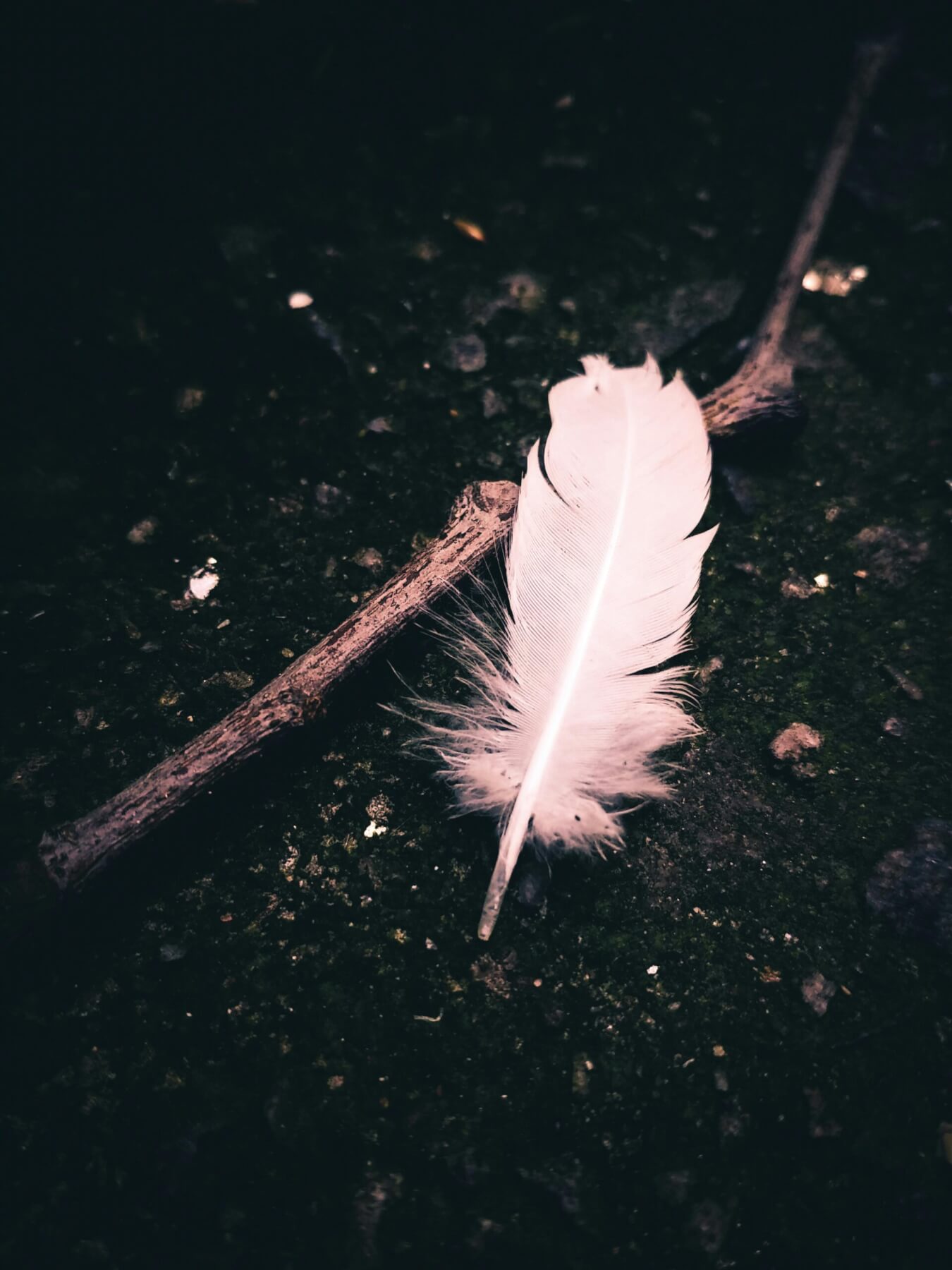
Feather Photo: Isaque Pereira, pexels.com
Oddly enough, feathers of all sizes, colours and shapes often seem to come ‘across my path’ when I’m out and about. Some are ‘ordinary’, but sometimes I find an extraordinarily beautiful one, which I keep. Based on their structure and location on a bird’s body, feathers fall into categories- whether wing feathers, tail feathers, down or plumage. Each makes up a finely tuned structure, serving an important role in the bird’s activities.

Murray Smith
Every year in accord with the arrival of pink spring blossoms on a nearby tree, we enjoy dozens of beautiful tūī gathering to ‘gorge’ and make melody by our home. They’re a very ‘present’ bird with the noisy whirring of their wings inflight, boisterous antics and their complex tuneful vocal riffs echoing afar.
A sad sight caught my attention while walking through a local reserve. A tui had somehow met its end and lay just off the pathway. Tui, though appearing black from a distance, are a uniquely colourful bird. This one, judging by appearance and general condition, had not long been dead. Though lifeless, its feather colourings shimmered in the light… flashing green, blue, and purple all at once. The iridescent brownish bronze sheen on its back and sides and distinctive white feather tufts (poi) on the throat, made me feel like I was holding an iconic treasure as with a heavy heart, I prepared to bury it.
Looking at bird feathers under magnification can be fascinating – they exhibit detail that powerfully confirm amazingly intentional design. Feathers allow birds to fly but they also help them show off, blend in, stay warm, and keep dry. There are feathers which provide specialised aero-foil functions for efficient flight. Others feature extreme ornamental forms such as the male peacock with his impressive displays most of us are familiar with.

Feather Photo: Isaque Pereira, pexels.com
Feathers can also speak to us of nurture and protection. An Australia farmer described the aftermath of a bush fire that had raged across his property. He casually nudged a nondescript charred mound with his boot. Turning it over he discovered it was a burned mother hen that had sacrificed herself to protect several little chicks that ran out from underneath. In the Bible there’s a stunning lament Jesus made as He looked over the city of Jerusalem, “How often I would have gathered you as a hen gathers her chicks but you would not…” Having been rejected as Israel’s Messiah in the main, Jesus foresaw terrible suffering just ahead. It came in AD70, when the Romans under Titus, laid siege to Jerusalem in a catastrophic invasion.
People turning authentically to God discover His heart to protect and shelter them just as a mother hen gathers her young under her wings for safe shelter and care. This metaphorical theme recurs in the Bible, of God providing safety from fears and danger in a hiding place under ‘the shadow of the Almighty’. This was King David’s experience. He wrote about ‘running to God’ and finding security, loving faithfulness and protection under the ‘shadow of His wings’.
David’s testimony and experience can also be ours..,“In the shadow of Your wings I will take refuge, till the storms of destruction pass by.”








